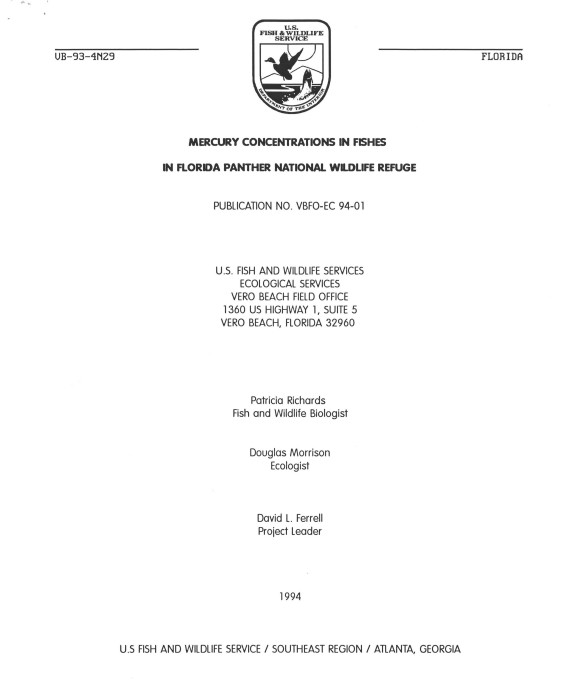
Pistol Pond Improvement Project Resources
Advocacy
Water
Big Cypress
Join
Pistol Pond is being stocked with fish from the Welaka National Fish Hatchery.
Reports
Mercury Concentrations in Fishes Collected from Pistol Pond (2024)
Of the 18 samples that were analyzed during 2024, only one, a Mayan cichlid, exceeded the .46 mg/kg mercury concentration that the EPA recommends for women of childbearing age (about 16-49 years old), pregnant and breastfeeding women, and young children to avoid eating (Figure 2 and Table 1). Two other Mayan cichlids and one largemouth bass were fairly close to the highest allowable average mercury concentration in fish per serving when eating 1 serving per week, which is 0.46 mg/kg for women of childbearing age, pregnant and breastfeeding women, and young children (Table 1). These are promising results when compared to those that were documented by Richards and Morrison when they sampled FPNWR fishes during 1993, and the 2024 results are similar or lower than those documented by Brim et al. 1994.
 U.S. Fish & Wildlife Service National Wildlife Refuge Florida Panther National Wildlife Refuge Sept. 2023
U.S. Fish & Wildlife Service National Wildlife Refuge Florida Panther National Wildlife Refuge Sept. 2023
Comprehensive Conservation Plan: Florida Panther National Wildlife Refuge 2000
Pistol Pond Project Related Excerpts from the above Report

Report on Mercury in Fishes: Florida Panther National Wildlife Refuge 1994
…Enclosed is a copy of the final report for an EC Study (VB-93-4N29) on mercury levels in fishes in Bullet and Pistol Ponds. All fish (n=39), but one, had mercury levels above the 0.5 ppm limitedconsumption level. All largemouth bass collected had mercury levels >1.5 ppm, the no consumption heaJrth advisory level. Mean mercury concentrations for Florida gar and bluegill were significantly greater than the 0.5 ppm limited-consumption health advisory. We recommend that these ponds not be open to public fishing; or at least have Florida HRS issue health advisories, and catch-and-release fishing only.

